Ben Shahn’s Allegory sets the stage for an inquiry study that explores the far-reaching consequences of Jim Crow laws and housing segregation in the mid 1900s.
Before launching an inquiry study it is important to have students experience a work of art on their own terms. Use this opportunity to build background knowledge, engage empathy, and spark wonderings. This link offers teaching moves and language for introducing students to Ben Shahn’s’ Allegory. Ben Shahn’s Allegory is an especially powerful painting for launching an inquiry study. His motivations in creating this painting introduced a compelling human drama that kept me asking, “What happened next?” I found the answers to that repeated question intellectually and emotionally transformative. I wish that transformation on anyone who takes up this inquiry. View an overview video.
For history/social studies teachers who are teaching about Jim Crow laws, institutional racism, and the rise of ghettos in post World War II America, the Hickman family tragedy as chronicled in the socialist newspaper, The Militant offers a unique opportunity to learn from historical artifacts and put a face to larger social issues. As the related journal the Fourth International explains,
Every so often a previously unknown individual suddenly attracts wide attention. There is usually a social reason for this. The story connected with the particular case epitomizes the plight of voiceless millions, focusing attention on the needs of one group and the crimes of another, bringing into the light of day the festering rottenness of class society..… Hickman’s story is the story of Jim Crow as it is practiced north of the Mason-Dixon line. Lynchings and Ku-Klux terrorism in the South are the most sensational manifestations of this system, and they receive the most publicity and attention. But there is much more to it. There are other, more “routine;’ day-by-day, “less violent” by-products of this system which are no less destructive, no less barbaric in their effects on the victims. For proof – there is Hickman.
“The Case of James Hickman” from Fourth International, September–October 1947, Vol. 8 No. 8, pp.229–230.
The Hickman tragedy personifies the plight many black families suffered in cities throughout the United States. Reading these news accounts puts a face and a story to oppressive discrimination endured by many. Here is a gallery of especially telling articles. Click on the image to expand. Drag the jpg into a Word document to create your own handout.
- “Grief-stricken tenant shoots landlord for fire-death of 4” (The Militant, August 4, 1947, page 5)
- “Hickman case victims tell tragic story to ‘Militant,’” (The Militant, August 11, 1947, page 6)
- “Labor and Negro groups in Chicago rally to defense of James Hickman” (The Militant, August 18, 1947, page 6)
- “Defense committee asks state to free Hickman” (The Militant, September 15, 1947, page 6)
- “Hickman’s freedom sought in Chicago – mass meeting backs defense; trial postponed until Oct. 27” (The Militant, October 6, 1947, page 1)
- “Liberal labor figures come to aid of Hickman” (The Militant, October 13, 1947, page 6)
- “Hickman’s trial opens in Chicago – defendant is victim of restricted covenants” (The Militant, November 10, 1947, page 1)
- “Trial of James Hickman nears climax in Chicago” (The Militant, November 17, 1947, page 1)
- “Hickman jury disagrees new trial set for Jan. 5” (The Militant, November 24, 1947, page 1)
- “Hickman’s vindication at trial spurs broader defense drive” (The Militant, December 1, 1947, page 6)
- “Hickman defense chairman outlines committee’s plans” (The Militant, December 15, 1947, page 6)
- “Hickman is saved; free on probation” (The Militant, December 22, 1947, page 1)
- “Committee Hails Hickman Victory” (The Militant, December 22, 1947, page 1 and 5) — This article summarizes the story and its universal themes.
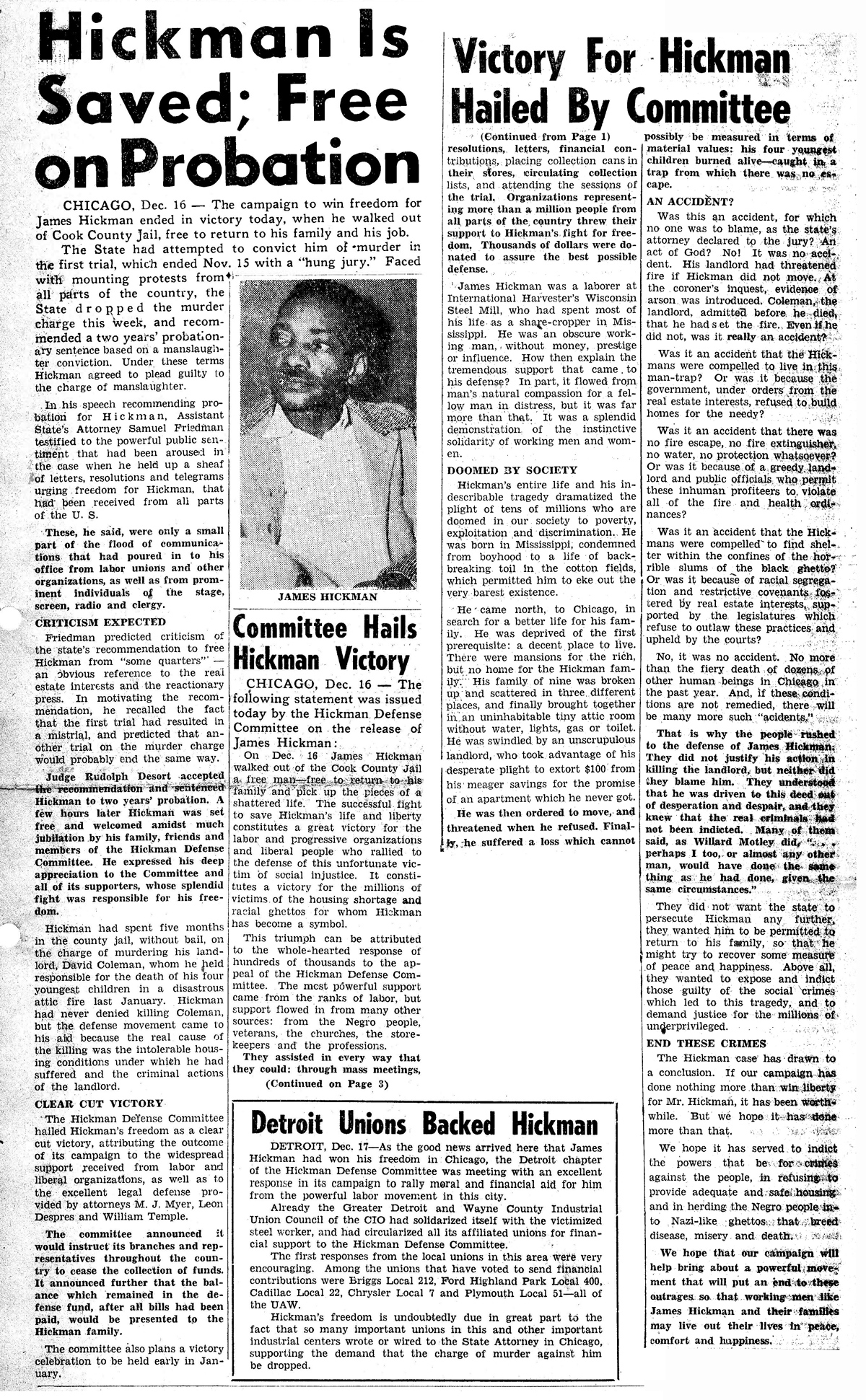 Have small groups read different articles and plot key events on a class timeline that maps how the story evolved. As students share, capture their questions and points of interest. These articles touch on Jim Crow laws, restricted covenants, and the rise of ghettos. As historical artifacts, these articles also provide insight into socialism in the United States and the values and concerns of the Socialist Workers Party. They offer an opportunity to teach students how to read for point of view. Through The Militant’s news coverage related (and contemporary) world events spill in and around this story. I was especially intrigued how a form of social media was used to raise awareness and exert pressure on the legal system. Have students research and respond to their questions.
Have small groups read different articles and plot key events on a class timeline that maps how the story evolved. As students share, capture their questions and points of interest. These articles touch on Jim Crow laws, restricted covenants, and the rise of ghettos. As historical artifacts, these articles also provide insight into socialism in the United States and the values and concerns of the Socialist Workers Party. They offer an opportunity to teach students how to read for point of view. Through The Militant’s news coverage related (and contemporary) world events spill in and around this story. I was especially intrigued how a form of social media was used to raise awareness and exert pressure on the legal system. Have students research and respond to their questions.
The Question Formulation Technique (QFT) can help turn art observations and wonderings into inquiry-based research questions that build on student insights and interests. For ideas on how to structure inquiry circle see Stefanie Harvey and Smokey Daniels Comprehension and Collaboration: Inquiry Circles for Curiosity, Engagement, and Understanding.

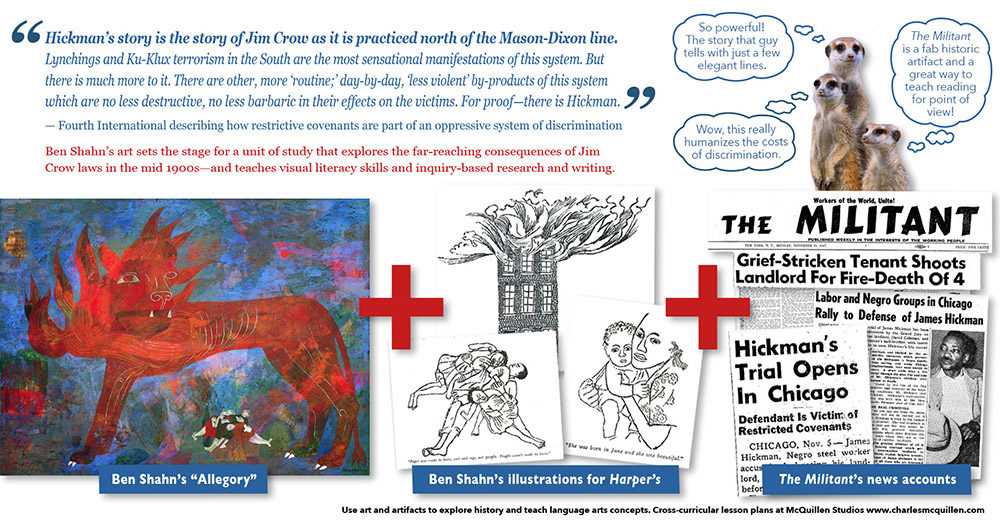
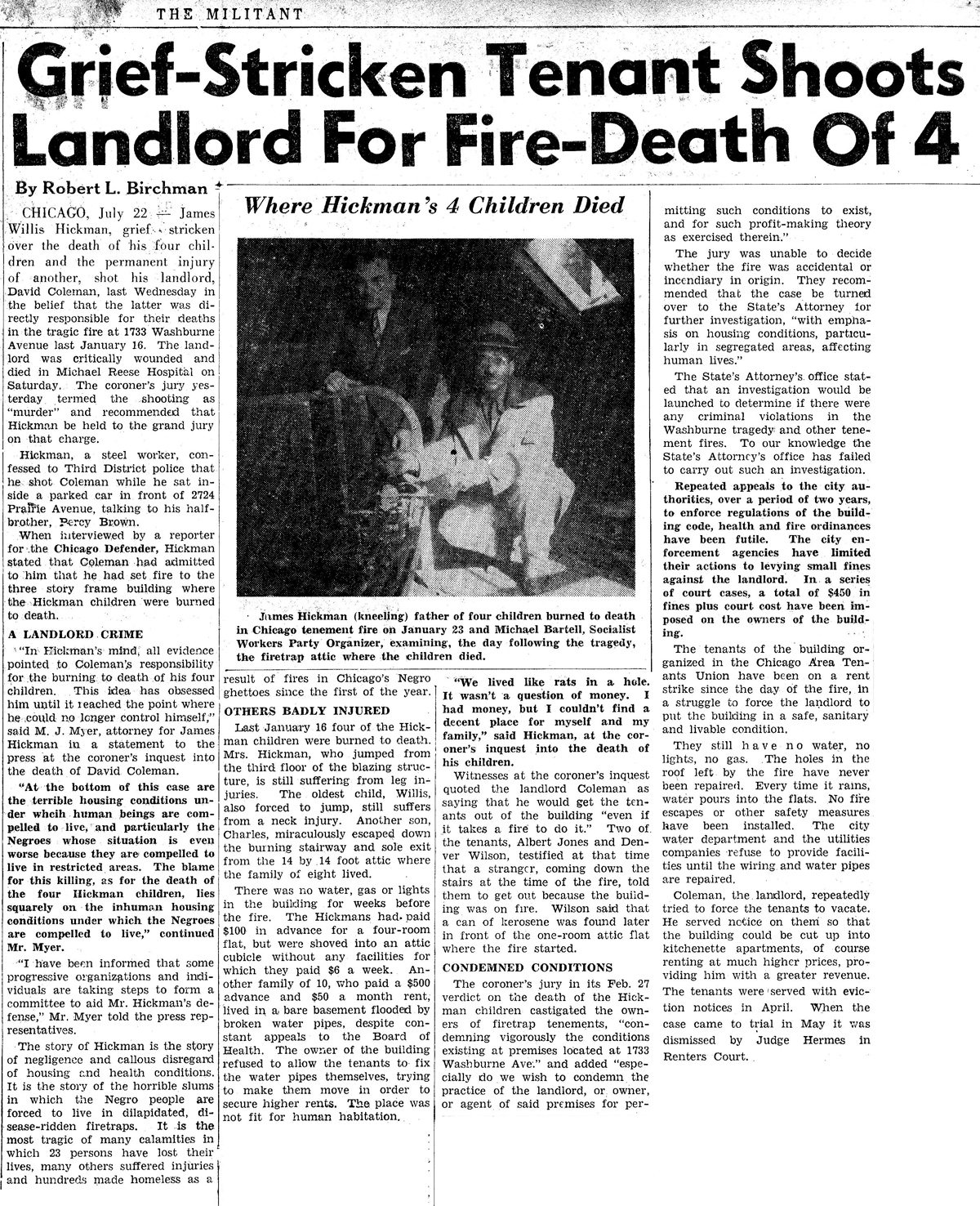

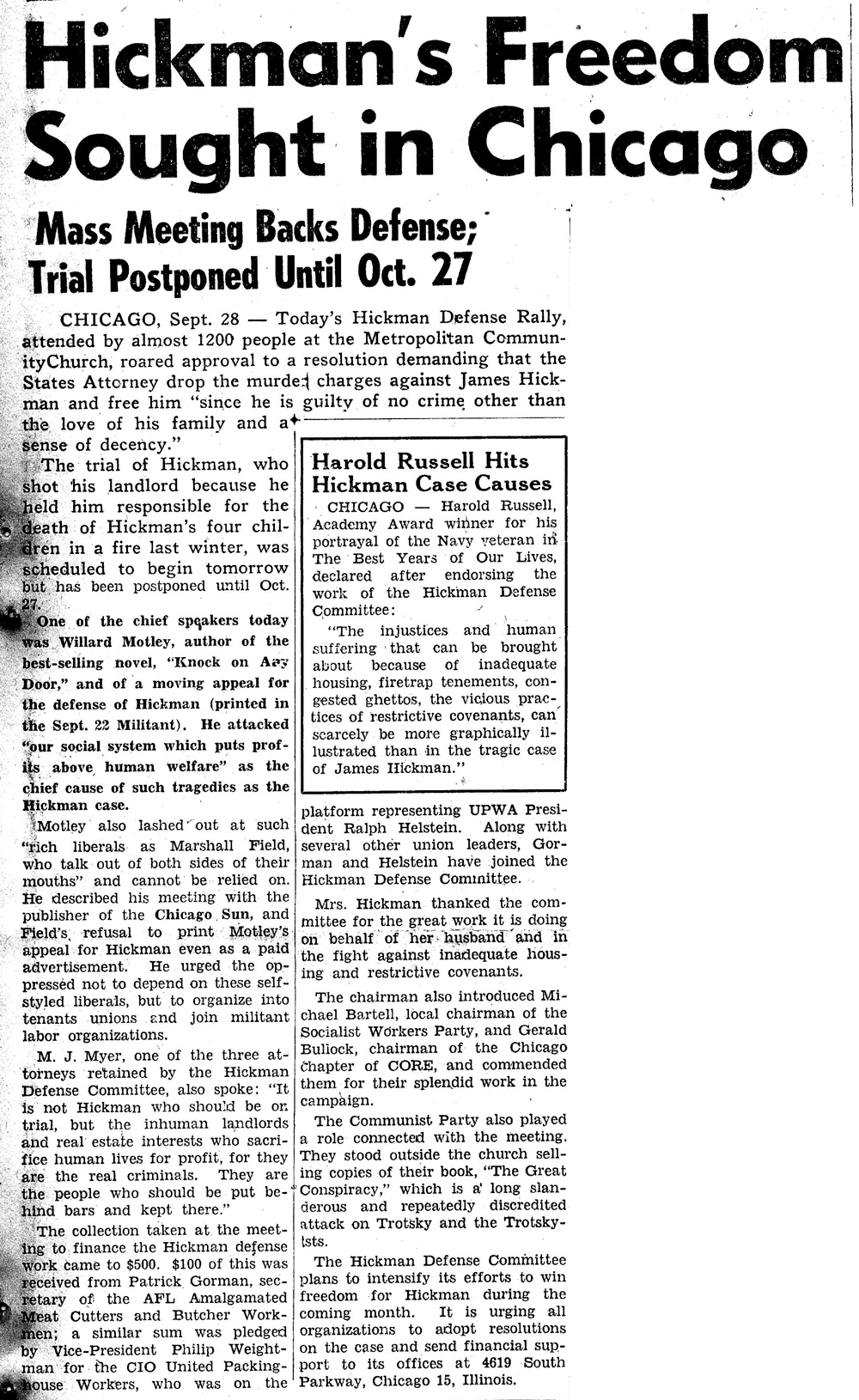
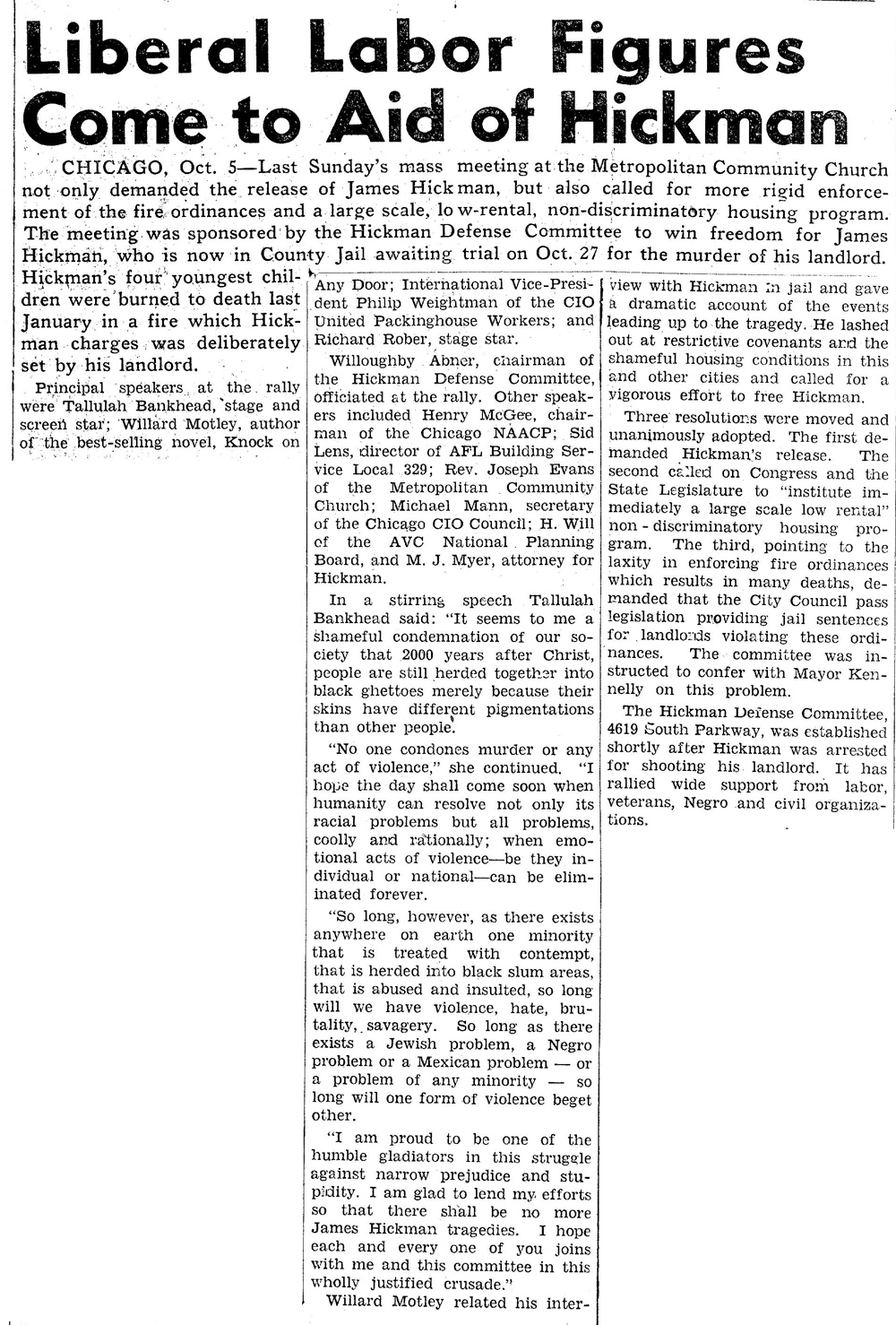
Comments are closed, but trackbacks and pingbacks are open.